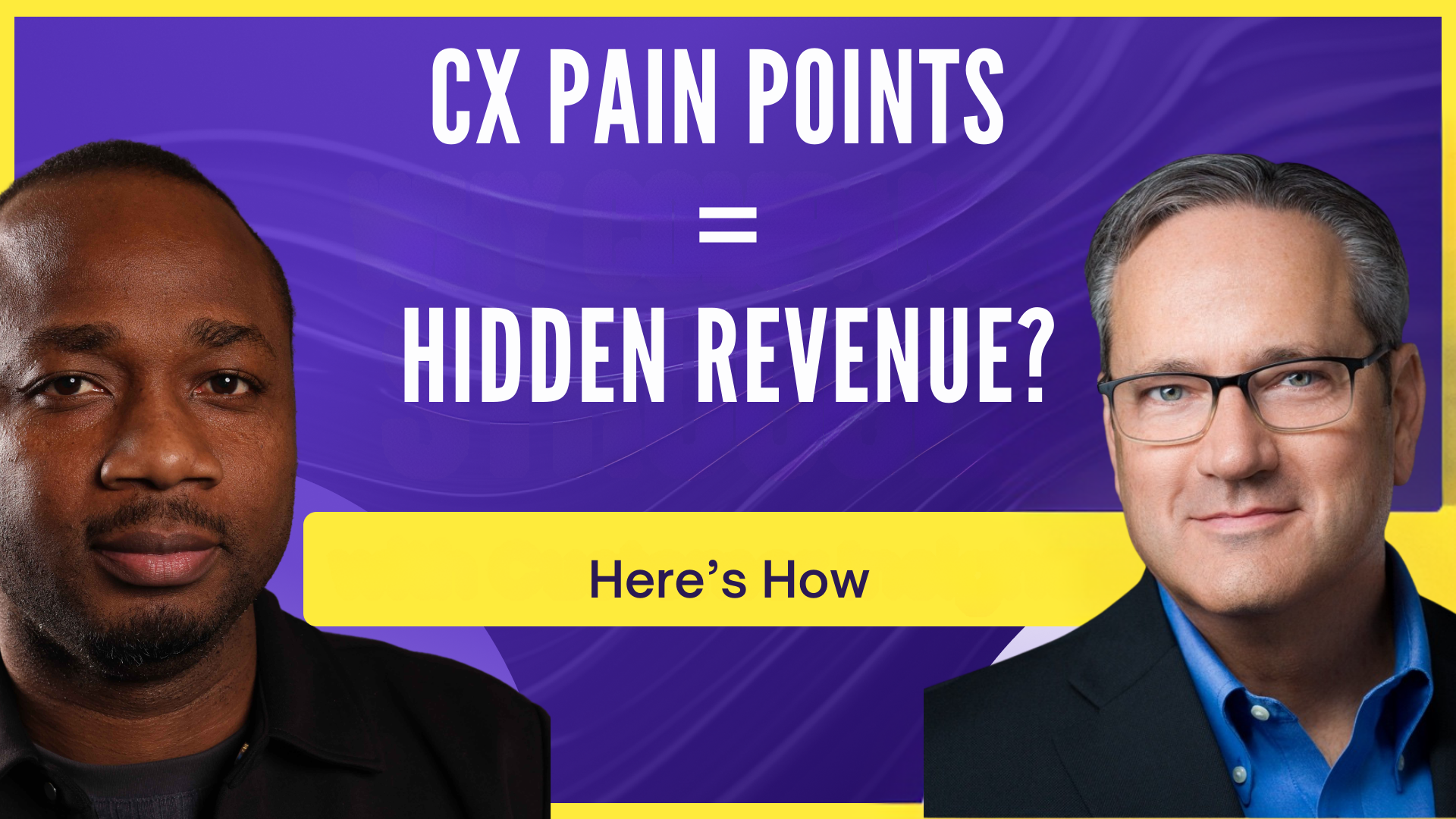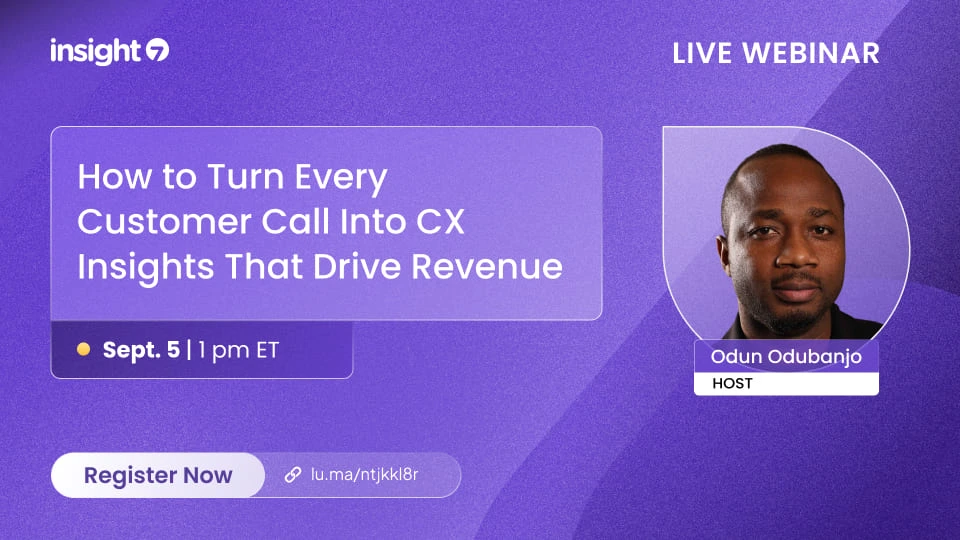Call Analytics for Healthcare Marketers: Explained
-
Bella Williams
- 10 min read
In today's fast-paced healthcare environment, understanding patient interactions is crucial. Healthcare call analytics transforms how organizations manage and evaluate their communication efforts. By analyzing call data, healthcare marketers can unlock valuable insights that drive more informed decision-making and improve patient engagement strategies.
Healthcare call analytics goes beyond basic tracking; it provides a comprehensive look into patient needs, preferences, and pain points. These insights can lead to enhanced service offerings and tailored marketing campaigns that resonate with target audiences, ultimately fostering stronger relationships between healthcare providers and patients. Understanding this innovative tool is key for marketers looking to navigate the complexities of healthcare communication effectively.
Generate visualizations from your qualitative data. At Scale.

Understanding Healthcare Call Analytics
Healthcare call analytics involves systematically evaluating incoming and outgoing calls to derive meaningful insights. By analyzing conversations, healthcare marketers can better understand patient needs and behaviors. This process captures vital data from each interaction, enabling organizations to refine their communication strategies.
One key aspect of healthcare call analytics is identifying patterns in patient inquiries. For instance, frequent questions regarding specific treatments can inform targeted marketing efforts. Additionally, call analytics can highlight employee performance, ensuring that customer service representatives adhere to best practices. Overall, understanding healthcare call analytics empowers healthcare marketers to enhance patient engagement, streamline operations, and ultimately improve service delivery. By harnessing these insights, organizations can create more personalized experiences that effectively address patient concerns and preferences.
Importance of Call Analytics in Healthcare
Call analytics plays a crucial role in healthcare by providing valuable insights into patient interactions. By analyzing voice calls, healthcare providers can identify common patient concerns and improve service delivery. This process helps in understanding not only what patients are asking, but also how well staff are responding to those inquiries.
Moreover, healthcare call analytics allows for the evaluation of communication effectiveness among team members. With data-driven assessments, organizations can refine training programs and enhance team member performance. For instance, identifying frequently asked questions can lead to better staff training, directly improving patient experience and satisfaction. By utilizing these insights, healthcare marketers can align their strategies to meet patient needs more effectively, ultimately driving better health outcomes and satisfaction levels.
Key Metrics in Healthcare Call Analytics
Key Metrics in Healthcare Call Analytics play a crucial role in optimizing call performance and enhancing patient engagement. By analyzing call data, healthcare marketers can gain valuable insights into customer experiences, identify common inquiries, and assess the effectiveness of their service representatives. These metrics unfold a narrative that brings clarity to customer interactions, allowing marketers to adjust strategies accordingly.
Several key metrics can be monitored. First, call volume indicates the number of incoming calls, providing a foundation for understanding peak times and resource allocation. Second, call duration helps gauge the average time spent on calls, which can reveal both efficiency and areas needing improvement. Third, first-call resolution (FCR) measures the percentage of issues resolved during the initial interaction, highlighting customer satisfaction. Finally, conversion rates reflect how well calls translate into positive outcomes, whether appointments or inquiries. Monitoring these metrics is essential for continuously refining strategies and enhancing patient relationships in the healthcare sector.
Evaluate Performance on Customer Calls for Quality Assurance.
Leveraging Call Analytics for Effective Healthcare Marketing
Effective marketing in healthcare requires understanding patient needs, and Healthcare Call Analytics offers critical insights to achieve this. By analyzing call data, healthcare marketers can identify common patient inquiries, sentiment, and brand perceptions. This information helps in tailoring strategies that resonate with patients, ultimately enhancing engagement and satisfaction.
To implement these insights effectively, consider these strategies. First, clarify your goals; know what you want to achieve with call data. Next, select tools that can analyze and report on key metrics, ensuring they align with your objectives. Finally, focus on training your marketing team to utilize these analytics in their campaigns. By fostering a culture of data-driven decision-making, healthcare organizations can optimize their marketing efforts, leading to better patient outcomes and increased loyalty. Embracing Healthcare Call Analytics not only strengthens marketing strategies but also enhances overall patient care.
Strategies for Implementing Call Analytics in Healthcare
To implement effective Healthcare Call Analytics, it’s essential to start with clearly defined goals. Identifying what the healthcare organization aims to achieve—such as improving customer service or increasing appointment bookings—will guide the entire analytics process. Establishing specific objectives helps in selecting the right metrics to measure success over time.
Next, choosing appropriate tools for call analytics is crucial. Solutions should not only capture call data but also analyze conversations for key insights. Healthcare marketers must then train their teams on using these tools effectively. This training ensures staff understand the analytics and can apply the insights gained to refine marketing strategies.
Lastly, regularly reviewing the insights generated from the calls aids in adjusting approaches and improving overall performance. By following these strategies, healthcare organizations can harness the full potential of Healthcare Call Analytics, transforming raw data into actionable insights that enhance service delivery and patient engagement.
Step 1: Identify Goals and Objectives
Identifying clear goals and objectives is crucial when adopting healthcare call analytics. This step sets the foundation for understanding what you aim to achieve through your analysis. You need to ask yourself specific questions: Are you looking to improve patient service? Do you want to increase appointment bookings? Establishing these objectives will help guide your data collection and analysis efforts.
Once your goals are outlined, it's important to prioritize them. Begin with more pressing issues, like enhancing communication with patients. Consider metrics such as call volume and response time to gauge effectiveness. By having defined aims, you can continuously assess the impact of your strategies, adjust as necessary, and ultimately drive better outcomes for both your healthcare organization and the patients you serve.
Step 2: Choose the Right Tools
Choosing the right tools for healthcare call analytics can significantly impact your marketing efforts. Start by identifying platforms that specialize in the unique needs of the healthcare sector. Look for features that allow for seamless data ingestion and analytics capabilities. Essential tools should offer robust reporting options that can transform your call data into actionable insights.
Consider the importance of user-friendly dashboards that simplify the analysis process. These dashboards should enable you to track key metrics like call duration, conversion rates, and caller satisfaction. Additionally, ensure that your selected tools comply with data privacy regulations, as the healthcare industry demands strict adherence to such standards. With the right tools, you can elevate your healthcare marketing strategy, enabling more personalized patient interactions and ultimately improving service delivery.
Step 3: Train Healthcare Marketing Teams
Training healthcare marketing teams is crucial for effective implementation of call analytics. Understanding how to analyze patient interactions can unveil valuable insights and drive strategic decisions. Focused training equips teams with the necessary skills to interpret call data accurately and act on it. This empowers them to identify trends, concerns, and opportunities for improvement, ultimately enhancing patient engagement and satisfaction.
To achieve this, consider these essential training components:
Understanding Call Metrics: Engage the team in the meanings of vital metrics, such as call duration, abandonment rates, and customer satisfaction scores.
Interpreting Data: Provide hands-on experience in analyzing call data. Training should involve real-life scenarios to help team members grasp practical applications.
Crafting Strategies: Educate your team on how to utilize insights derived from call analytics to refine marketing campaigns and improve service delivery.
Effective training fosters a proactive marketing culture in healthcare organizations, ultimately improving patient experiences through informed decision-making.
Case Studies: Successful Use of Call Analytics in Healthcare Marketing
The successful implementation of healthcare call analytics has transformed how organizations engage with patients. By analyzing call data, healthcare marketers can identify trends and common questions, which allows them to enhance their outreach efforts. For instance, one organization utilized call analytics to develop targeted marketing campaigns, addressing specific patient inquiries. This approach not only improved patient satisfaction but also drove higher appointment scheduling rates.
Another case study highlights how healthcare call analytics aided in refining service offerings. By tracking the types of questions callers asked, marketers could identify gaps in service delivery. Consequently, they reorganized their training for customer service representatives, ensuring that staff were better equipped to handle patient concerns. These insights showcase the potential of healthcare call analytics to not only optimize marketing strategies but also enhance overall patient experience. Such real-world applications demonstrate the value of data-driven decision-making in the healthcare marketing arena.
Conclusion: The Future of Healthcare Call Analytics
As we look toward the future, the role of healthcare call analytics will undoubtedly become more significant. The ability to extract meaningful insights from customer interactions will empower healthcare marketers to refine their strategies, enhance customer service, and improve patient outcomes. By analyzing call data, marketers can identify trends and adapt training programs to address specific queries, ensuring that customer service representatives are equipped to handle the most common concerns.
Moreover, integrating advanced analytics tools will bring a new level of efficiency to communication channels. Future developments may include real-time analysis and automated reporting, allowing healthcare organizations to respond swiftly to patient needs. This evolution in healthcare call analytics will not only drive better marketing strategies but also ultimately lead to an improved patient experience.







